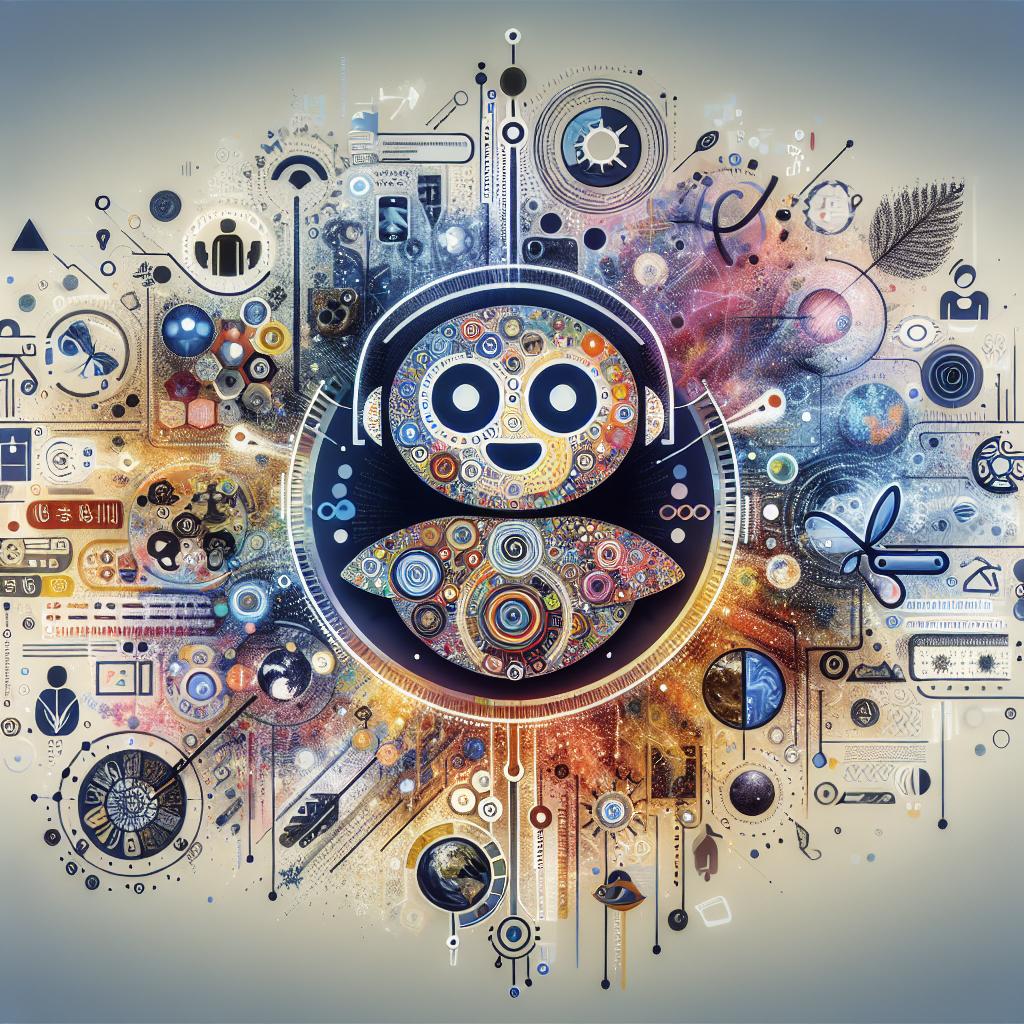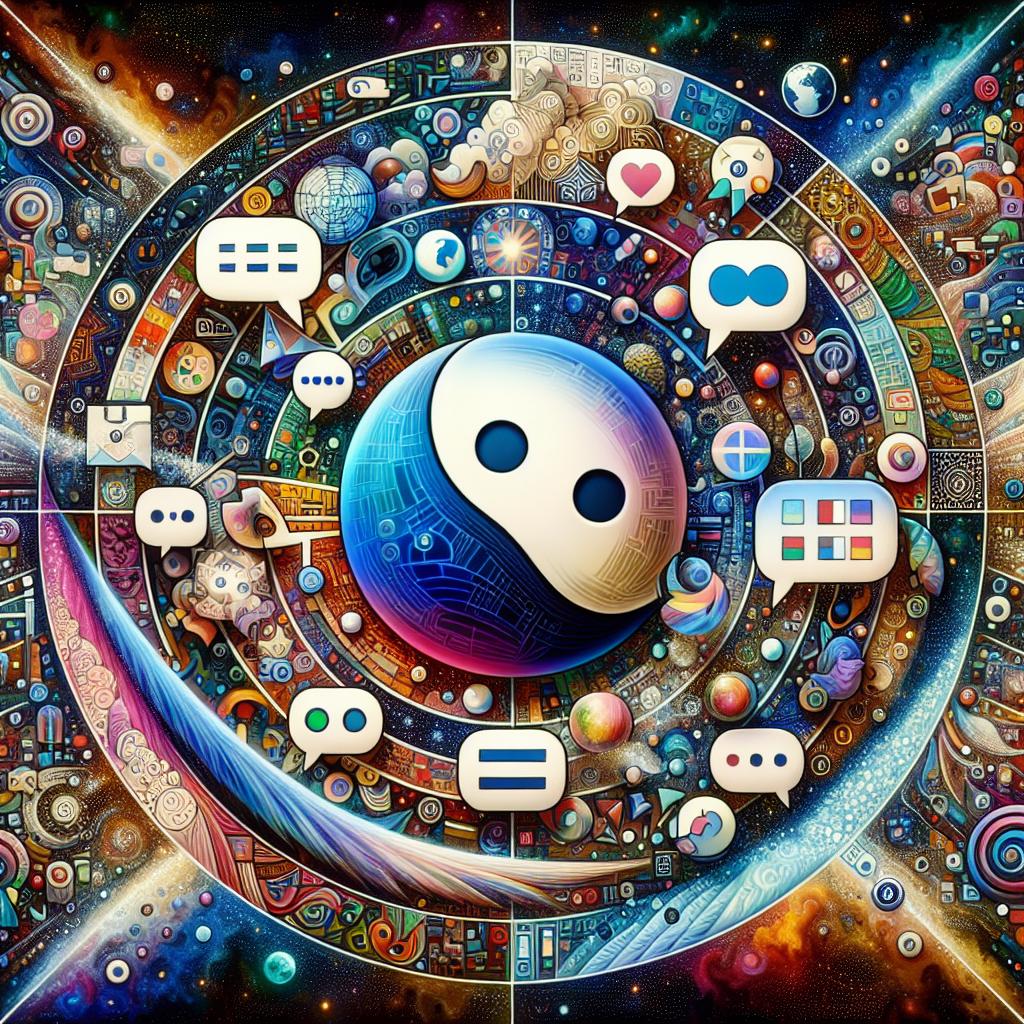In an interconnected world where communication knows no borders, the advent of chatbots has revolutionized how we interact with technology. Gone are the days of language barriers stifling conversations and limiting access to resources. Picture this: a kind digital assistant, ready to converse with you in yoru language of choice, whether it’s English, Spanish, Mandarin, or Swahili! The rise of multi-language support in chatbots is not just a technological advancement; it’s a beacon of inclusivity, welcoming diverse voices and enriching user experiences across the globe. In this article, we’ll embark on a journey to explore how chatbots are breaking down linguistic walls, enhancing customer engagement, and fostering a sense of belonging in our multicultural society. So, let’s dive in and discover how these virtual companions are mastering the art of conversation, one language at a time!
Exploring the Power of Multilingual Chatbots for Global engagement
In today’s interconnected world, businesses can no longer afford to limit their reach to a single language. Multilingual chatbots empower organizations to communicate effortlessly with diverse audiences, breaking down language barriers and enabling global engagement. By integrating natural language processing capabilities, these chatbots can understand and respond in multiple languages, offering personalized interactions that resonate with users irrespective of their linguistic background. Imagine a customer in Japan seeking support in Japanese, while a client in Brazil engages in check-out assistance in Portuguese—this is the magic of multilingual capabilities. Brands are no longer confined to their local markets; instead, they can establish meaningful connections worldwide.
Implementing a multilingual chatbot strategy can significantly enhance customer satisfaction and loyalty. Here are a few key benefits:
- Immediate Accessibility: Users can interact in their preferred language, making communication seamless.
- Increased Engagement: Personalized experiences encourage users to explore services and products more thoroughly.
- Expanded Market Reach: Breaking language barriers opens doors to new client segments and opportunities.
| Language | Potential Market size |
|---|---|
| Spanish | 580 million |
| Mandarin | 1.1 billion |
| French | 274 million |
The future is undeniably multilingual, and those who embrace this paradigm are likely to thrive in the competitive landscape.Building a multilingual footprint with chatbots will not only streamline operations but also foster a sense of belonging among customers, leading to elevated brand loyalty and a robust global presence.

Building Bridges: How Language Support Enhances User Experience
In today’s globalized world,effective communication is crucial for user engagement and satisfaction. By incorporating multi-language support into chatbots, businesses can tap into the rich tapestry of diverse cultures and languages that their audience represents. This addition fosters a sense of connection and understanding, allowing users to interact seamlessly in their preferred language. By addressing language barriers, brands can enhance user trust and loyalty, as customers feel valued and heard. Implementing chatbots with language support transforms user interactions into meaningful conversations that resonate on a personal level.
Moreover, integrating multi-language capabilities into chatbots not only broadens the reach but also provides valuable insights into user preferences and behaviors across different regions. Consider the impact of language diversity on customer service effectiveness:
| Language | Engagement Rate | Customer Satisfaction |
|---|---|---|
| English | 78% | 85% |
| Spanish | 82% | 88% |
| Mandarin | 75% | 80% |
With metrics like these, the value of diverse language support becomes strikingly evident. By catering to users in their native tongue,businesses can significantly improve engagement rates and foster a more satisfying experience that drives retention and conversion. Embracing the rich variety of human languages not only enhances customer interactions but also builds a vibrant community around shared interests, helping brands stand out in a competitive marketplace.

Cultural nuances Matter: tailoring Chatbot Conversations for Diversity
In our increasingly interconnected world, understanding cultural nuances is essential for creating meaningful interactions through chatbots. A one-size-fits-all approach fails to resonate with users who come from diverse backgrounds. It’s not just about translating words; it’s about translating intent and context. Chatbots must be equipped to recognize local slang, idioms, and cultural references, ensuring that conversations feel natural and engaging. By considering factors such as:
- Language Dialects: variations within languages can influence comprehension.
- Formality Levels: Different cultures have differing expectations for formal versus informal communication.
- Emotional tone: Understanding how cultures express emotions can guide tone selection.
moreover, visual elements play a crucial role in supporting multicultural interactions. A chatbot designed for a specific demographic should incorporate culturally relevant images, colors, and symbols that resonate positively with users. As an example, a color that signifies positivity in one culture may have entirely different connotations in another. To streamline this, brands can develop structured guidelines to ensure their chatbots align with cultural sensitivities. Below is an example outline for these guidelines:
| Culture/Region | Preferred Language | Recommended tone | Visual Elements |
|---|---|---|---|
| North America | english | Casual | Bright colors, playful emojis |
| Japan | Japanese | Formal | Subtle colors, customary motifs |
| Brazil | Portuguese | Friendly | festive images, tropical designs |

Future-Proofing Your Chatbot: Adapting to Language Trends and Technologies
In a constantly evolving linguistic landscape, it’s essential for chatbots to not only support multiple languages but also seamlessly adapt to new language trends. This means engaging with colloquialisms, slang, and regional dialects that are emerging within different cultures.By regularly updating the language models to include such nuances,your chatbot can maintain relevance and enhance user engagement. Consider implementing features that allow your bot to learn from user interactions, thereby keeping its responses fresh and aligned with the current vernacular. Key strategies include:
- Regular language updates: Ensure the chatbot’s language database is refreshed periodically.
- User feedback integration: Collect and analyze feedback to identify trending phrases or terms.
- AI machine learning: Utilize algorithms that enable the bot to understand and incorporate new language patterns.
Moreover, as technology advances, integration of complex natural language processing (NLP) tools can greatly enhance a chatbot’s functionality in multilingual settings. By employing AI-driven platforms that leverage context-aware processing, chatbots can provide culturally and linguistically appropriate responses, greatly enriching user experiences. For effective deployment, consider evaluating your chatbot against certain criteria:
| Criteria | Description |
|---|---|
| Contextual Understanding | Ability to discern user intent based on context. |
| Real-time Translation | Instant translation capabilities for seamless communication. |
| Emotion Detection | Identifying user sentiment to tailor responses. |
In Retrospect
As we wrap up our journey through the fascinating world of chatbots and their commitment to multi-language support, it’s clear that these digital companions are more than just lines of code—they’re bridges that connect diverse cultures and communities.In a world that’s more interconnected than ever, the ability to communicate in multiple languages not only enhances user experiences but also fosters inclusivity and understanding across borders.
Just think of the countless conversations happening right now, as chatbots seamlessly switch between languages to cater to every individual’s unique needs.Whether it’s helping someone in a bustling city or a remote village, chatbots are becoming the friendly voices that break down language barriers and offer personalized assistance, one chat at a time.
So, as you explore the potentials of chatbots in your own projects or daily interactions, remember that each new language integrated is a step towards making the digital realm a little more welcoming for everyone.After all, in this vibrant tapestry of human experience, every conversation counts, and every language matters. Embrace the diversity, and let’s keep the dialog going! 🌍✨

